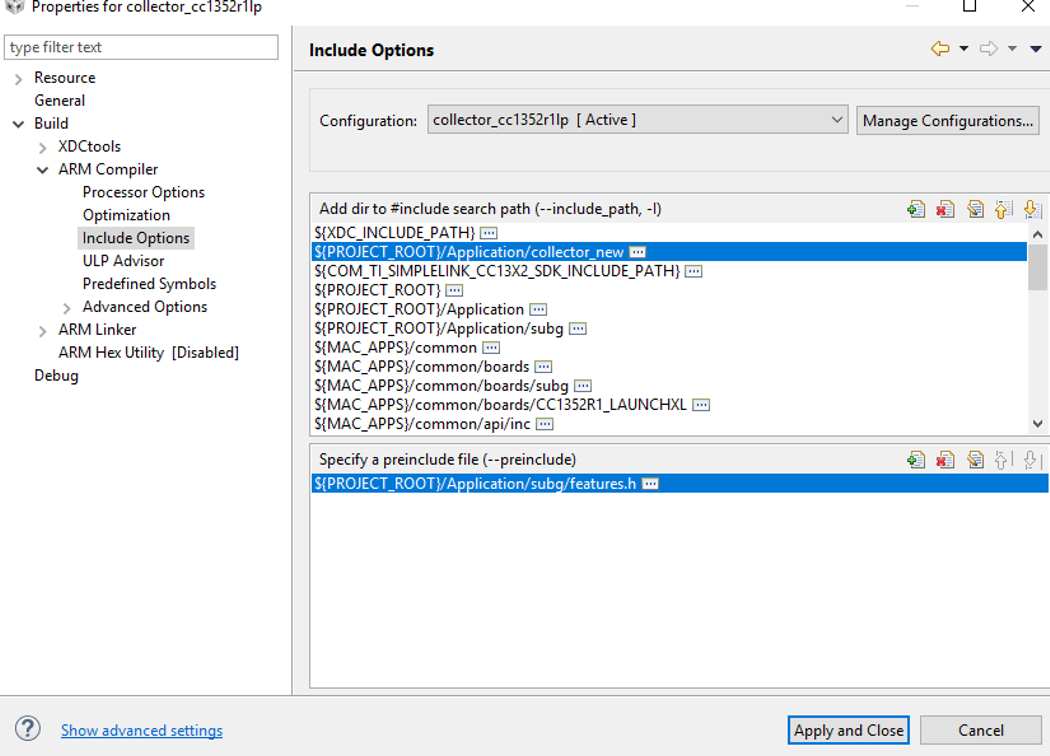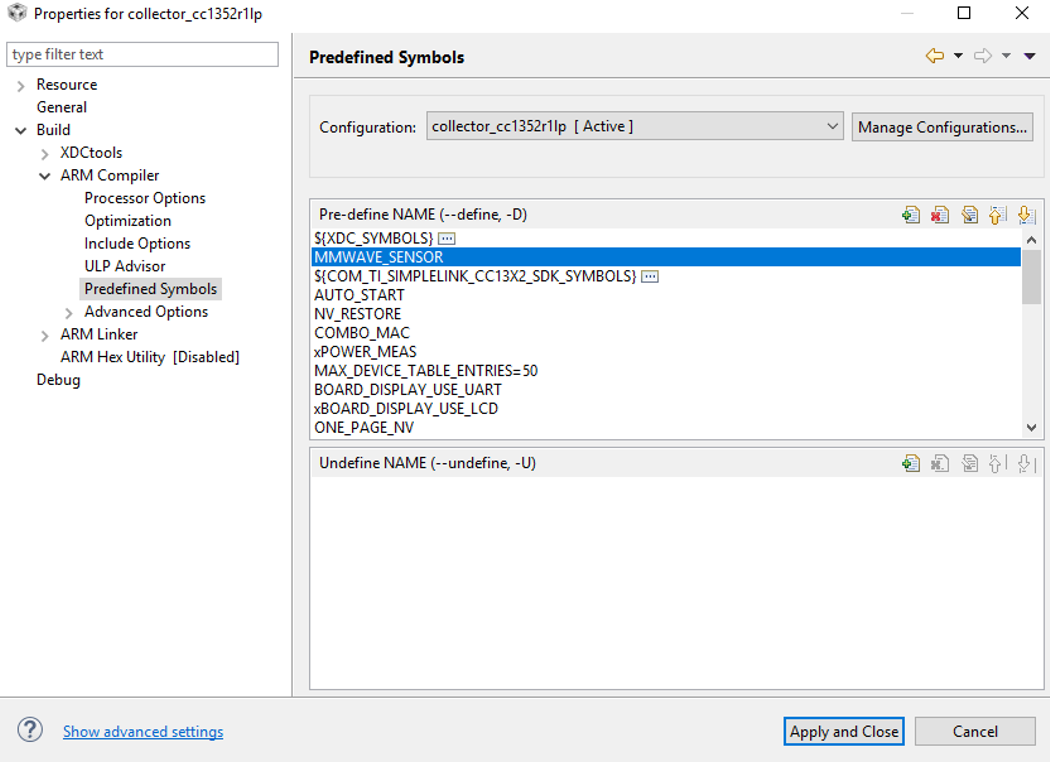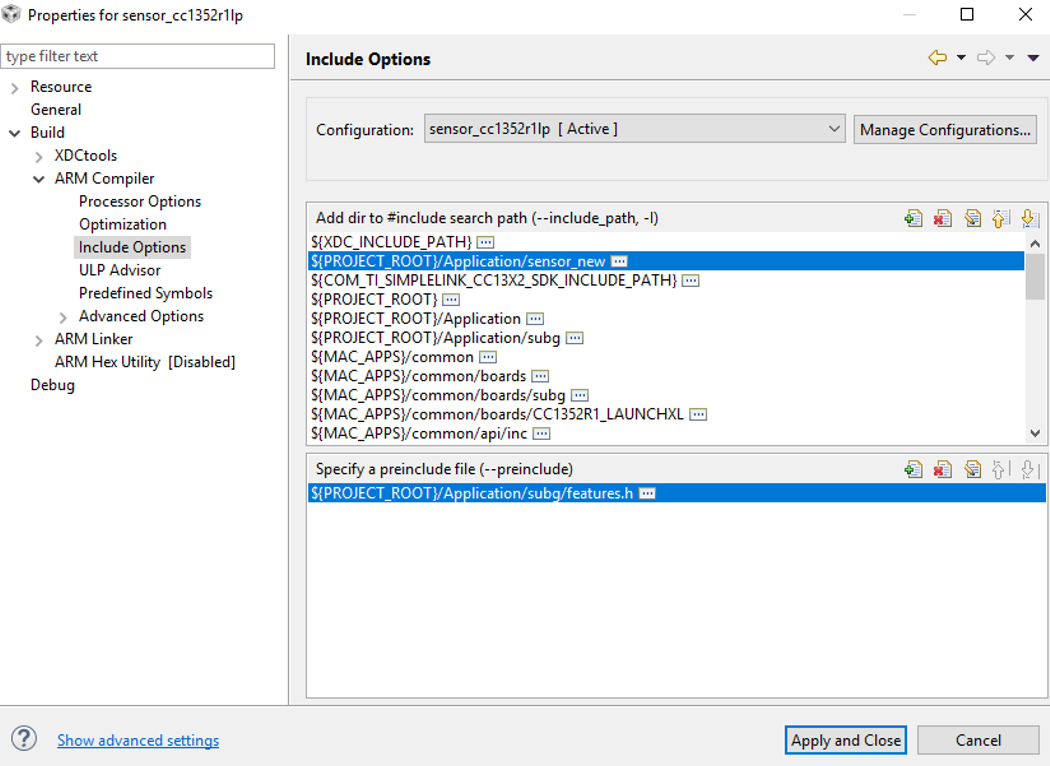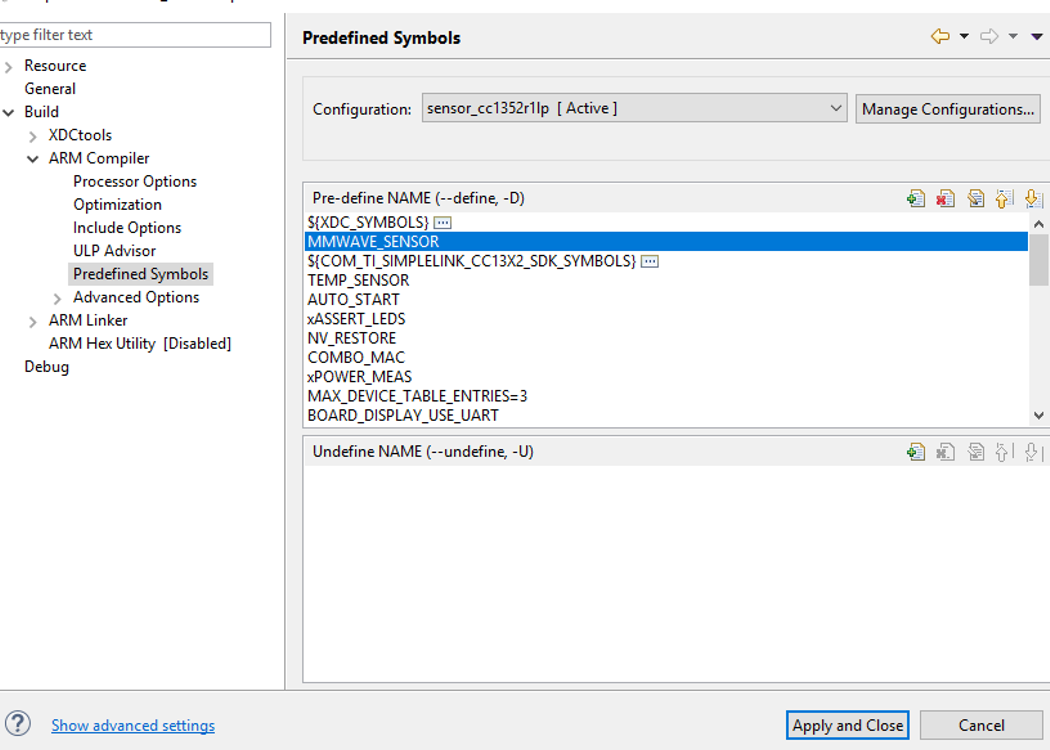TIDUED6B august 2018 – april 2023
- Description
- Resources
- Features
- Applications
- Design Images
- 1System Description
- 2System Overview
- 3Hardware, Software, Testing Requirements, and Test Results
- 4Design Files
- 5Software Files
- 6Related Documentation
- 7Trademarks
- 8About the Author
- 9Revision History
3.1.2.4 Building the Firmware
The firmware for this TI design is based on the collector and sensor example code provided with the TI 15.4 stack. Patches are included with this TI design to apply the necessary changes to the example code. Follow these steps to apply the patches and build the example code.
- Download Simplelink-cc13x2-sdk (version 2.10.00.48) from http://www.ti.com/tool/SIMPLELINK-CC13X2-SDK.
- Project > Import CCS project.
- Search in C:\ti\simplelink_cc13x2_sdk_2_10_00_48\examples\rtos\CC1352R1_LAUNCHXL\ti154stack directory.
- Import two projects: collector_cc1352r1lp and sensor_cc1352r1lp.
- Apply the patch for collector node:
- Right-click collector_cc1352r1lp and go to Team > Apply patch…
- Apply the collector patch (patch is found in Software Files)
- Right-click collector_cc1352r1lp and go to Properties
- In Include Options, add folder ${PROJECT_ROOT}/Application/collector_new
- In Predefined Symbols, add MMWAVE_SENSOR
- Apply patch for sensor node:
- Right-click sensor_cc1352r1lp and go to Team > Apply patch…
- Apply the sensor patch (patch is found in Software Files)
- Right-click sensor_cc1352r1lp and go to Properties
- In Include Options, add folder ${PROJECT_ROOT}/Application/sensor_new
- In Predefined Symbols, add MMWAVE_SENSOR
- Build the collector node code using Code Composer Studio:
- Select "collector_cc1352r1lp" and right click it, find Build Project and click on it to build the project
- "**** Build Finished ****" should display under the Code Composer Studio console when the project is built successfully.
- Build the sensor node code using Code Composer Studio:
- Select "sensor_cc1352r1lp" and right click it, find "Build Project" and click on it to build the project
- "**** Build Finished ****" should display under the Code Composer Studio console when the project is built successfully.
 Figure 3-12 Adding Include Options for Collector Node
Figure 3-12 Adding Include Options for Collector Node Figure 3-13 Adding Predefined Symbols for Collector Node
Figure 3-13 Adding Predefined Symbols for Collector Node Figure 3-14 Adding Include Options for Sensor Node
Figure 3-14 Adding Include Options for Sensor Node Figure 3-15 Adding Predefined Symbols for Sensor Node
Figure 3-15 Adding Predefined Symbols for Sensor Node